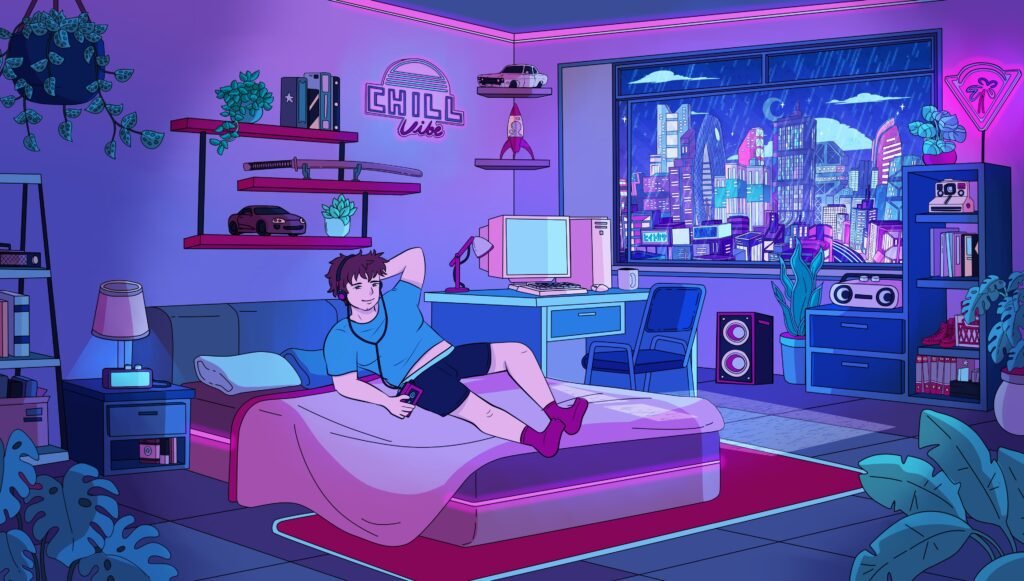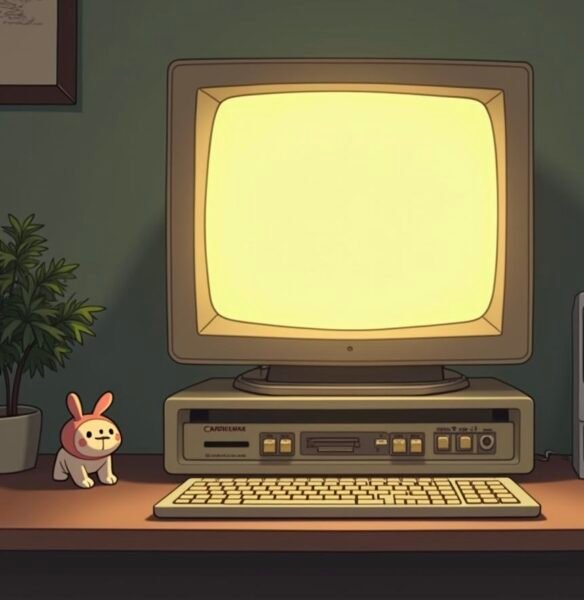Product Description
Chapter 1: Foundations of Your Persona, Niche, and Brand
Section: VTuber Setup and Worldbuilding
There’s a special kind of wonder the first time you blink…
and your avatar blinks with you.
You smile, and it smiles back.
You tilt your head, and the weight of your imagined self shifts through a space you can finally touch.
Today, we step quietly into that magic—
by learning how to rig your model for live use.
This is the part that takes your character from a still picture…
to a breathing presence.
It’s technical, yes.
But it’s also deeply personal.
It’s about how you’ll be seen. How you’ll move through the dreams you’re offering others.
Let’s walk through it gently, thoroughly, and without overwhelm.
What Rigging Actually Is (And Why It Matters)
At its heart, rigging is the process of adding an invisible “skeleton” to your character art or 3D model.
It lets the avatar move in response to your real-world expressions and gestures.
Think of it like this:
- Bones = How your avatar bends and pivots.
- Joints = Where movements are allowed (neck, arms, eyebrows, tails).
- Physics = How soft parts bounce, hair sways, clothing shifts.
- Face tracking = Smiles, blinking, head tilts, talking.
Rigging allows you to:
- Nod and shake your head naturally
- Smile, pout, smirk
- Blink, wink, widen your eyes
- Speak with synced mouth shapes
- Add fun details like ear twitches, tail wags, belly jiggles, hair movement
Without rigging, your avatar is frozen—a beautiful painting, but lifeless.
With rigging, your avatar breathes, reacts, seduces, teases, welcomes.
Getting Rigging Done: Hire It or Learn It?
First truth:
It’s absolutely normal to hire someone else to rig your model—especially if you’re just starting out.
Rigging, particularly good rigging, is a specialized technical art.
It’s not a skill you have to master yourself unless you truly want to.
In fact, most professional VTuber avatars are created by teams, not individuals:
- One person draws the art (called “model art” or “PSD file”).
- Another rigs the art into a layered, moving 2D object.
- Sometimes another person polishes or optimizes the rig for specific software (like VTube Studio).
Time Reality:
Even small rigging jobs can take 20–50+ hours for experienced professionals.
Big models (complex physics, extra limbs, multiple outfits) can take much longer.
Cost Reality:
- Basic 2D rigging (face, mouth, light body) starts around $250–$600.
- Full, expressive rigs with full body physics can run $1000–$3000+.
Important:
Don’t assume high price = high quality.
Look carefully at examples of previous work.
Rigging should feel natural, clean, and alive—not stiff or janky.
A Recommendation (Based on Experience)
When I had Max Reynard brought fully to life,
I worked with a team on Fiverr who absolutely understood my vision—and respected it.
They weren’t just technical experts.
They were creative collaborators.
They handled my needs for:
- Clean, emotional facial tracking
- Natural chest/belly physics (important for Max’s design)
- Subtle tail animations
- Good eyebrow/ear expressiveness without feeling cartoonish
Working with the right people made the difference between “just okay”
and feeling like Max was truly alive.
DIY Rigging: If You’re Excited to Try
If you’re feeling curious—or want to save money early—you can absolutely dip a toe into simple rigging yourself.
Tools You’ll Need:
- Live2D Cubism Editor (free trial available, paid version needed for commercial work)
- VTube Studio (to test your rigged model live)
The Process (very simplified):
- Prepare your model art properly. (Every movable part must be on a separate layer—eyes, hair, head, body, arms, tails, etc.)
- Import the PSD file into Live2D Cubism.
- Create “deformers” — mini grids that allow parts to flex, squash, and stretch naturally.
- Set up parameters like head angle, body tilt, eye blink, mouth open/close.
- Test animations and adjust smoothness.
- Export and load into VTube Studio.
Beginner Tip:
Start with basic movements first—just head tilts and blinking.
You can always add more complexity later.
Learning to rig teaches you tremendous respect for the craft—and it lets you tweak or upgrade small things yourself in the future without being dependent on others.
But it is a commitment of time and brainpower.
It’s more like sculpting than painting.
If your real goal is getting on camera and connecting with your audience emotionally, it’s completely okay to focus your energy elsewhere and hire help.
Managing Expectations: Budget, Limitations, and Growth
No matter whether you DIY or hire:
Realistic Expectations:
- Your first model won’t have every single bell and whistle.
- Limited budget means simpler tracking—maybe no body sway, or simplified hair physics.
- Some expressions (blushing, angry face, sad face) might cost extra to add.
And That’s Okay.
Because here’s the secret:
Your presence matters more than your polish.
Audiences bond to your energy, your storytelling, your emotional accessibility—
not to how many physics deformers your bangs have.
You can—and should—upgrade over time:
- Add new outfits
- Refine your movements
- Layer in new expressions
- Grow your model alongside your audience
Treat your rigging investment like planting seeds.
You’re building a living, evolving world—
not sprinting to a finish line.
Checkpoint to reflect:
- Would you rather start simple and save energy for storytelling?
- Or does the technical side sound exciting to you as another form of creative expression?
Neither answer is wrong.
It’s just about which kind of joy you want to prioritize first.
Rigging Is the Bridge From Dream to Dance
Your avatar was born in imagination.
But rigging gives it legs—and voice—and breath.
Whether you build that bridge yourself, or walk across one built for you by a talented guide,
the most important thing is this:
Cross it.
Let your world move.
Let your creation look back at you.
Let yourself—quietly, proudly—become.
When you’re ready, the next post will show you how to start Adding Voice and Personality to Your Avatar—because movement without soul is only half the journey.
Return to the Table of Contents




